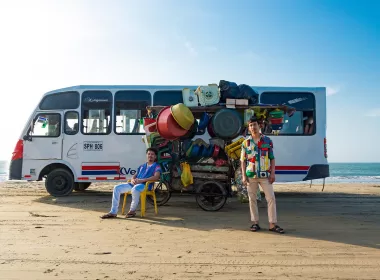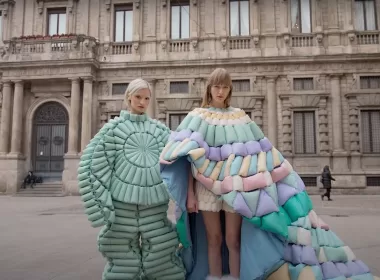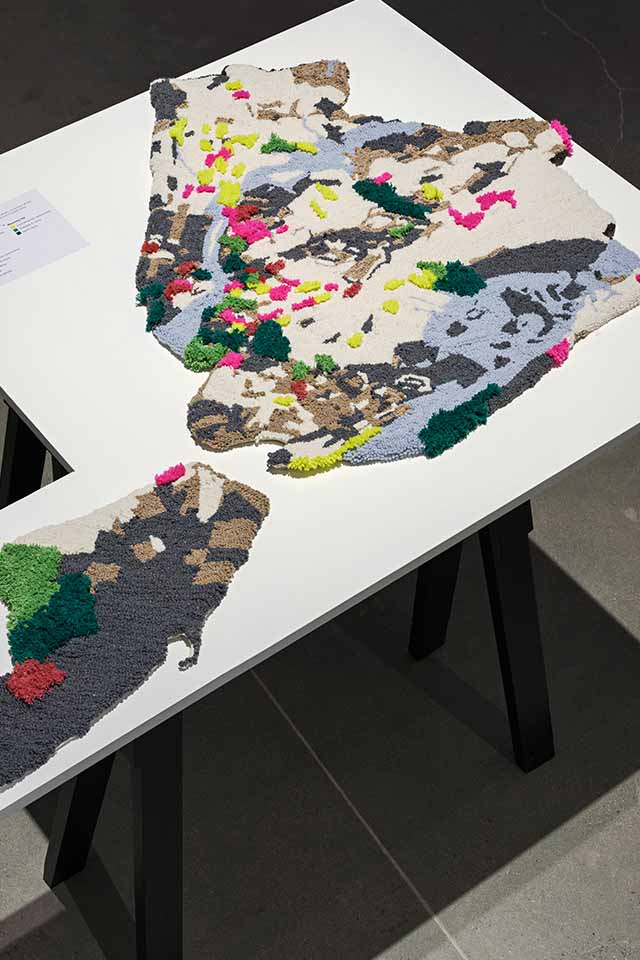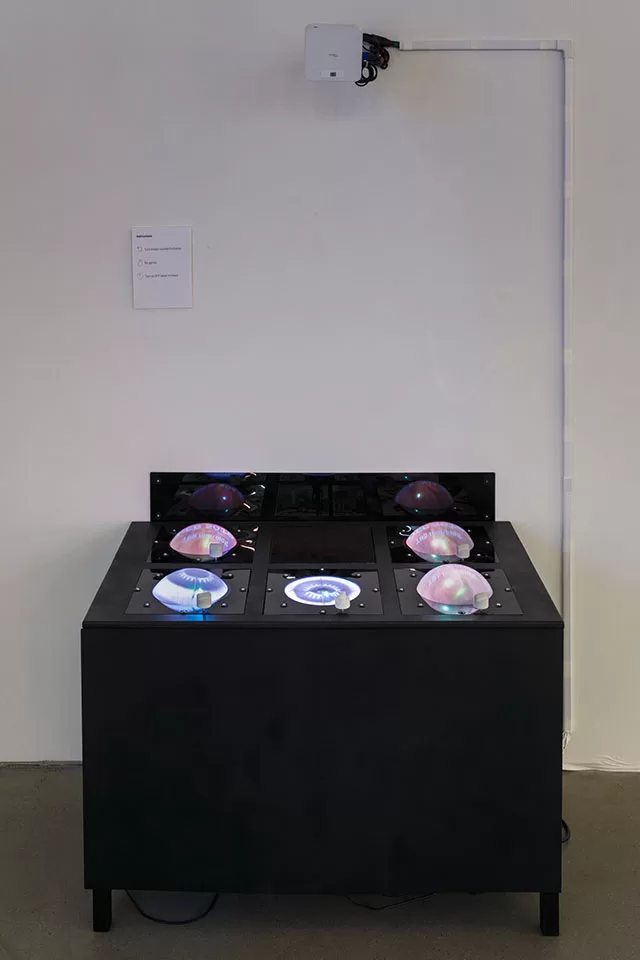Every March, New York City holds a week-long celebration of the city’s public data, known as Open Data Week. This event also celebrates the anniversary of the Open Data Law, officially signed on March 7, 2012, which mandates that all public data in New York City be published on a single web portal by the end of 2018. Hosted by the NYC Open Data Team at the Office of Technology and Innovation (OTI), BetaNYC, and Data Through Design (DxD), Open Data Week offers resources, events, and learning opportunities for people to engage with and learn more about the importance of municipal public data.
The 2024 Open Data Week took place from March 16 to 24 and was marked by the opening of the annual DxD art exhibition. As an independent collective, DxD is funded partly by the Greater New York Arts Development Fund of the New York City Department of Cultural Affairs, administered by the Brooklyn Arts Council, and presented by BRIC. Each year, DxD determines a theme and commissions several artists to create art and design projects spanning a wide range of media and formats working with New York City’s open datasets. The exhibition supports emerging artists who often hail from interdisciplinary backgrounds, ranging from activists and graphic designers to software engineers and architects, inviting them to discover new possibilities and push boundaries through their work.
This year’s theme was Aftermath. Regarding this theme, the DxD website states, “The data we collect today represent reverberations of past events; edited, interpreted, and distilled to tell a story of history”. Data gives insight into our current narratives, molding our understanding of the past and establishing a foundation for developing visions of the future. The theme of Aftermath also seeks to explore and challenge the relationships between data and reality, the biases that affect the narratives presented by data, and how these areas are affected over time. It encourages consideration for the impact of the aftermaths we leave behind through our data.
The exhibition featured nine projects, each offering creative interpretations that analyze and interrogate the data they draw upon, highlighting overlooked narratives, bringing new perspectives, and disrupting widely accepted patterns.
Looking into a speculative future of New York City in the year 2124, Claudia Berger and Gabriella Evergreen presented Pockets of Information: Community Care in a Speculative New York, a garment-based map depicting community resources stitched on the exterior of a chore coat used for disseminating information. Examining the near future through a physicalization of rezoning changes, Tatiana Kalainoff’s Rezoning: At What Cost? is an interactive map made of acrylic floors and blocks representing future buildings permitted for construction in Gowanus, Brooklyn. NYC Clock by Saralee Sittigaroon and Ziyu Zhang envisions the future of clocks, raising the question of what it might be like for time to be understood as a cultural artifact rather than an absolute truth, using data of people seeking help through emergency calls, inquiries, and service requests, culminating in a visionary installation of clocks.
Delving into the past, Parcel ATM by Raphaël Laude is an interactive ATM device that allows viewers to search through 22 years of tax lot data to inspect the financial, regulatory, socioeconomic, and built history of New York City. Helmuth Rosales’ Emissions of a Real Fantasy: The Aftermath of Fresh Kills uses data spanning over two decades on Fresh Kills landfill to digitally reconstruct the landscape implementing video and GIS records, including LIDAR, digital elevation models, and drone and satellite imagery. Plants: Informational Entities Over Time by Sonia Sobrino Ralston also revisits the past using LIDAR data and animation to reconstruct botanical models of plants at the site of Granny Oak, a 200-year-old oak tree, before its fall in Pelham Bay Park, juxtaposed by an animated rendering of the site in the present-day.
Capturing the aftermath of soil movement and remediation through New York City’s neighborhoods, Soil on the Move by Sophie Westen Chien is a textile map that raises questions of equitability in ecological investments. Rat Revolution by Pia Bocanegra, Lesley Huang, Danny Yang, and Linda Yang uses data on rat sightings and average temperature in New York City to examine the relationship between humans and city rats, represented by a tornado-esque lantern. An interactive installation made of inflatable stove burners, Chaosphere by Zongze Chen, Sharell Bryant, Angel Mai, and Yitong Chen allows participants to view monthly gas usage with video compilations of recent events depicting themes of triumph, controversy, and hardship of the human race.
Julia Bloom and Jen Ray, both curator-organizers and previously featured DxD artists, spoke on the importance of open data and being able to investigate such data through artistic mediums.
The DxD Exhibition addresses this by encouraging the use of art and design to get data “out” of databases
The NYC Open Data Portal provides public access to reliable data generated by New York City agencies and organizations. Bloom spoke about open data access as a form of taking ownership and finding empowerment. “We’re in these datasets,” she says, describing them as a self-portrait of the city. When data is accessible, it increases transparency and accountability, becoming an influential source of change.
Bloom and Ray also acknowledged the difference between the availability and accessibility of data. When data is freely available on an open source, it does not necessarily mean that it is accessible and easily understood by everyone, especially when it comes to considering the complexities of working with raw data.
The DxD Exhibition addresses this by encouraging the use of art and design to get data “out” of databases. The featured projects span a variety of mediums that encourage broader engagement and critical inquiry, fostering connections for audiences to experience the city as a collective organism. The DxD Exhibition creates a bridge between data and art, stimulating a deeper exploration of the issues and stories that are woven into the fabric of New York City.
Viewers are offered a unique opportunity to contemplate and reassess their perceptions of city life, along with the complexities that come with it.


